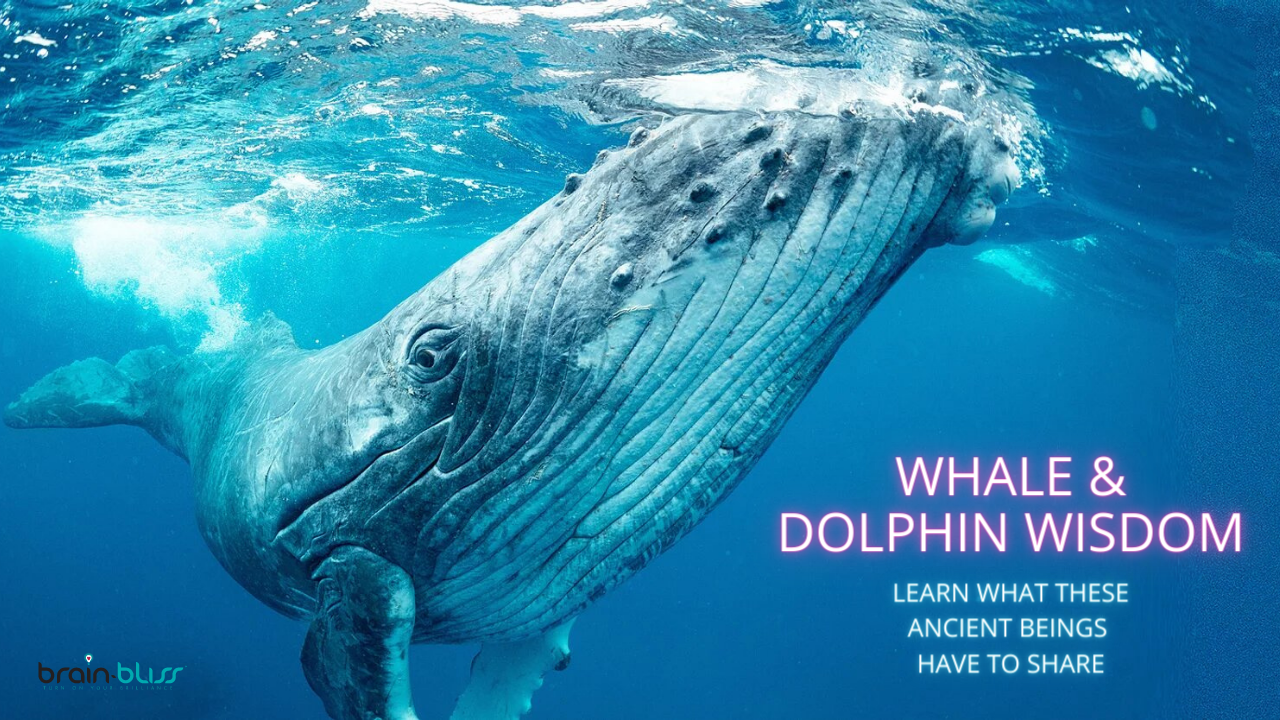REAL LIFE UNDERWATER ANGELS

Whales and dolphins fascinate us. They can be playful or majestic, but above all else, they are mysterious. We have a deep connection to them, and they have a unique connection to us. They are self aware and they might have collective consciousness as well.
They treat us the way they treat each other, with love and care - just think about the many stories of dolphins protecting people from shark attacks or saving them from drowning. They are empathic and will express emotions ranging from sadness to euphoria. They have been observed to grieve, and some suggest they are capable of suicide while trapped in captivity through consciously stopping to breathe. In captivity they appear to be smiling and playful yet over time their sonar bounces back to them from the concrete walls chips away over time, depleting their brain coherence. A dolphins natural life span is between 30 to 50 years yet in captivity their average life span is 12 years. Dolphin sounds are meant to sing through the vast natural ocean environment, where their abandoned freedom shows us the joy and bliss that is possible for humanity.
Whales and dolphins have distinct social relationships that they maintain using an extremely complex vocal communication system, most of which we have barely begun to understand. For example, some consider the humpback whale’s song to be the most complex vocalization in the animal kingdom, while bowhead whale’s is extremely rich and varied.

"Dolphins may well be carrying information as well as functions critical to the regeneration of life on this planet."
~ R. Buckminster Fuller ~

Whales communicate over very large distances, several hundred miles, using very low frequencies. Whales sing their songs to communicate with their families, for mate selection, for gathering food and for navigation while traveling far distances, and potentially for reasons scientists have not even considered.
Whale songs consist of distinct sequences of groans, moans, roars, sighs and high pitched squeals that may last up to 10 minutes or longer. Whales also sing for our planet! Their penetrating songs barrel through the sea with the power to keep balance and homeostasis on the ocean floor and beyond. Their deep delta tones orchestrate harmony and vibrancy.

"Humpback whales are the sound shamans of the sea."
~ Mahalia Michael ~

Dolphins use body language and touching for communication
- they are highly sensual, sexual beings.
Dolphins use clicks, chirps and whistles to communicate, and have a sophisticated sonar for navigation. New studies suggest that dolphins have an extra sound processing system in the brain. It starts at the inner ear and goes to the temporal lobe, where humans process language. Dolphins are capable of solving complex problems the way we do, both alone and while working together.
For echolocation they might use a different sound system - they emit sound through their melon, the fatty bulb on their forehead, that functions as an emitting radar, it focuses the sound that is sent out for echolocation. They receive the returning sound in pockets of fat in their jaw, which then forwards the information to their brain.
They sleep with half of their brain hemisphere awake while the other half sleeps. One eye open, on the awake side and the opposite eye closed. This way they can rest one side while the other scans their environment for predators.
Both whales and dolphins use frequencies that reach far beyond our hearing capabilities. Humans have a hearing range of around 20 Hz to 20kHz (20,000Hz), while bottlenose dolphins can hear and generate frequencies as low as 0.2 and as high as 150kHz.
Scientists think that the lower frequency vocalizations (about 0.2 to 50 kHz) are used in social communication while the higher frequency clicks are primarily used for echolocation.
They are truly among nature's most intelligent creatures!

More importantly though, they have a cerebral cortex that is suggestive of high intelligence. The surface layer of the brain is called the cerebral cortex; it is where most of the high-level information processing takes place. In order to allow for more processing, in highly evolved brains the surface area of the cortex is increased by folds and convolutions. And the dolphin brain’s cortex is much more convoluted than that of the human brain.
Whales are also essential for maintaining environmental balance. They make a crucial contribution to the cycle that provides us with oxygen, removes carbon dioxide, and feeds marine life by supporting the growth of phytoplankton.
Phytoplankton are tiny ocean plants that are consumed by many fish, produce 50-80% of the oxygen we breathe, and when they die they sink to the bottom of the ocean, taking carbon with them. Phytoplankton is dependent on iron for photosynthesis and growth, and it turns out, that whale feces is a major source of that iron.
By consuming large amounts of krill in the deep ocean, and releasing their feces close to the surface, whales are essential for recycling and making available the iron on the oceans.

Esoteric traditions believe that whales carry the ancient codes and records of the origins of life on our planet and the multiverse.
Science aside, if humanity truly desires change on planet earth, we may humbly choose to look to our ocean family for support, wisdom and guidance.
To communicate as whales and dolphins do using complex light and sound is possible and not only that, light and sound communication has been found to promote optimization of brain function, acceleration of peace and illumination of creative, healthy co-existence.
Oceans of LOVE from The Bliss Family
